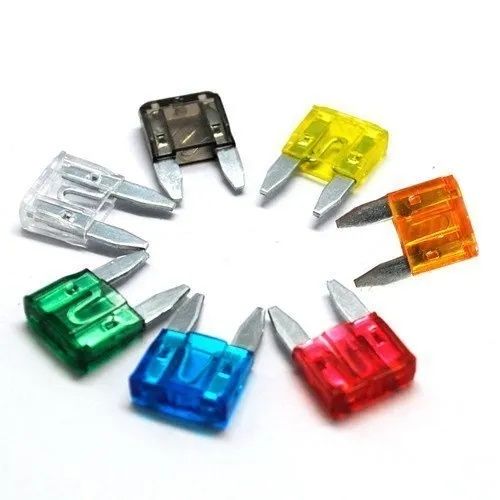Introduction to Fuses: Explanation, Advice, and Useful Information
Fuses are one of the oldest yet most essential electrical safety devices. They are designed to protect electrical circuits from damage caused by excess current or short circuits. When too much electricity flows through a fuse, its metal wire melts and breaks the circuit, preventing overheating and possible fire hazards.
The concept of a fuse dates back to the late 19th century, when electrical systems were first being standardized. Even today, despite the introduction of advanced circuit breakers and electronic protection devices, fuses remain a key component in homes, vehicles, industrial machinery, and electronics. Their simplicity, reliability, and low maintenance make them widely used in both modern and traditional systems.
Importance
Fuses matter because they directly contribute to electrical safety. Without them, small surges or faults in electrical systems could quickly escalate into dangerous events, causing equipment damage, system failure, or even fires.
Key reasons why fuses are important:
-
Household protection – They safeguard everyday appliances like refrigerators, washing machines, and televisions.
-
Automotive use – Vehicles rely on fuses to protect lights, radios, and onboard electronics.
-
Industrial safety – Manufacturing plants use high-capacity fuses to secure heavy equipment and prevent downtime.
-
Consumer electronics – Small fuses are built into chargers, adapters, and gadgets to prevent overheating.
In short, fuses benefit everyone—from homeowners and car owners to large-scale industries—by preventing accidents and ensuring smooth operation of electrical systems.
Recent Updates
The fuse industry has seen gradual but steady innovation. Although the fundamental principle has not changed, the design and applications have evolved:
-
Miniature fuses in electronics (2024–2025) – Demand for compact, surface-mounted fuses is rising with the growth of smartphones, laptops, and wearable devices.
-
Smart fuses (2023 onwards) – Some companies are experimenting with resettable fuses that integrate sensors to monitor current flow and send data for predictive maintenance.
-
Green initiatives (2024) – Eco-friendly materials for fuse components are being adopted to reduce environmental impact, especially in Europe and parts of Asia.
-
Automotive sector (2025) – With the expansion of electric vehicles, fuses with higher voltage ratings are being introduced to handle lithium-ion battery systems.
These updates show that while fuses are simple in design, they continue to adapt to modern electrical and energy needs.
Laws or Policies
Electrical safety is regulated by various standards and government rules worldwide. Fuses, being a safety-critical component, fall under these frameworks:
-
International Electrotechnical Commission (IEC) Standards – Global benchmarks that define fuse ratings, safety, and testing.
-
National Electrical Code (NEC) – United States – Requires proper fuse installation for residential, commercial, and industrial systems.
-
European Union (CE marking) – Electrical products, including fuses, must meet CE safety compliance.
-
Automotive Regulations (ISO/SAE standards) – Vehicle fuses must comply with global automotive electrical standards for passenger safety.
-
Renewable energy policies – Solar and wind installations often require fuse protection as part of regulatory safety codes.
Such rules ensure that fuses are manufactured and used consistently across industries, preventing hazards and promoting reliability.
Tools and Resources
Understanding and working with fuses is easier with the help of educational tools and technical resources:
-
Fuse sizing calculators – Online tools help select the correct fuse rating for appliances or circuits.
-
Electrical handbooks – Guides like the NEC Handbook or IEC manuals provide fuse specifications.
-
Manufacturer websites – Companies like Littelfuse, Bussmann, and Mersen publish detailed datasheets and application notes.
-
Safety training modules – Online courses from electrical associations often include sections on fuse selection and installation.
-
Testing equipment – Multimeters and specialized fuse testers help check continuity and functionality.
These resources are useful for students, electricians, engineers, and even general users who want to learn safe fuse handling.
FAQs
What is the main purpose of a fuse?
A fuse protects electrical circuits by breaking the connection when excess current flows, preventing overheating and damage.
How is a fuse different from a circuit breaker?
A fuse melts when overloaded and must be replaced, while a circuit breaker can be reset. Fuses are usually faster and cheaper, but less reusable.
How do I know if a fuse has blown?
Common signs include the device not working, a visible gap in the fuse wire, or discoloration. A multimeter can also confirm continuity.
Are fuses still relevant with modern technology?
Yes, fuses remain important because they provide reliable, low-cost protection. Even in advanced systems, fuses are used alongside circuit breakers.
Can I replace a fuse with a higher rating?
No. Using a fuse with a higher rating than recommended can create a fire hazard. Always match the correct rating specified by the manufacturer.
Comparison Table of Fuses
| Fuse Type | Typical Use Case | Pros | Cons |
|---|---|---|---|
| Cartridge Fuse | Household & Industrial | Reliable, easy to replace | Not resettable |
| Blade Fuse | Automotive systems | Compact, color-coded | Limited current capacity |
| Thermal Fuse | Appliances & electronics | Protects against overheating | Single-use only |
| Resettable Fuse | Electronics, telecom | Reusable, long lifespan | More expensive |
Conclusion
Fuses may seem like a small component, but they play an outsized role in electrical safety. Their importance spans homes, vehicles, industrial plants, and modern electronic devices. With recent innovations such as miniature and resettable fuses, they continue to adapt to technological trends like electric vehicles and renewable energy systems.
Regulations worldwide ensure fuses are reliable and safe, while tools and resources make it easier for users to understand and select the right type. By learning the basics of fuse functionality, updates, and applications, individuals and industries alike can make informed decisions and prevent serious electrical hazards.



